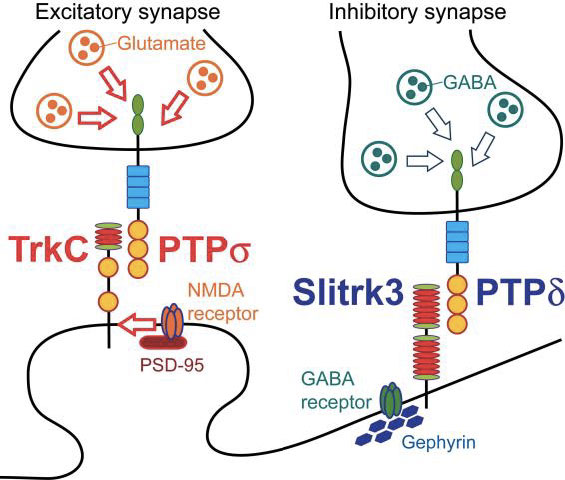Institut de recherches cliniques de Montréal (IRCM)
The development of chemical synapses in the brain is one of the most important biological processes for the formation of neuronal networks, enabling information processing for cognition, learning, and memory. In addition, neuropsychiatric disorders are one of the greatest burdens of disease in Canada, suggesting that it is crucial to understand molecular mechanisms that govern synapse development and their implication in neuropsychiatric disorders. In mature brains, neurons receive excitatory and inhibitory synaptic inputs from glutamatergic neurons and GABAergic interneurons, respectively. Synapse development requires not only physical contact between axons and target neurons but also chemically matched pre- and post-synaptic differentiation. Thus, synaptic organizing complexes, trans-synaptic adhesion complexes with the ability to induce pre- and/or post-synaptic differentiation, have been suggested to function as essential molecular signals for synapse development. The neuroligin-neurexin complex has been the most notable synaptic organizing complex and a genetic determinant predisposing to autism. However, synapse diversity suggests many other synaptic organizing complexes for excitatory and/or inhibitory synapses.
To identify novel synaptic organizers that induce presynaptic differentiation, I performed a functional expression screen based on a neuron-fibroblast coculture assay combined with full-length cDNA library or candidate prediction. Further, to identify their presynaptic binding partner, I performed candidate cDNA screening based on a cell-surface binding assay using soluble Fc-fusion ectodomain proteins of the novel synaptic organizers. Using these two screening approaches, we demonstrated that TrkC-PTPσ trans-synaptic complex functions as a bidirectional synaptic organizing complex that selectively regulates excitatory synapse development (Takahashi H. et. al., Neuron, 2011). Through the candidate screen based on coculture assay, we further identified Slitrk3-PTPδ trans-synaptic complex as an inhibitory synapse-specific synaptic organizing complex (Takahashi H. et. al., Nat. Neurosci., 2012).
Genetic studies have revealed linkages of NTRK3 encoding TrkC to panic disorder, obsessive compulsive hoarding and childhood-onset mood disorders, altered expression of microRNA that targets Slitrk3 mRNA in several autism patients, and strong linkages of PTPRD with restless leg syndrome, ADHD and autism. Our data may reveal novel pathogenic signaling pathways in neuropsychiatric disorders. Further, given many associations of multiple synaptic organizer genes with neuropsychiatric disorders, our data also suggest that aberrant synaptic organization could be a common pathogenesis of many neuropsychiatric disorders.
